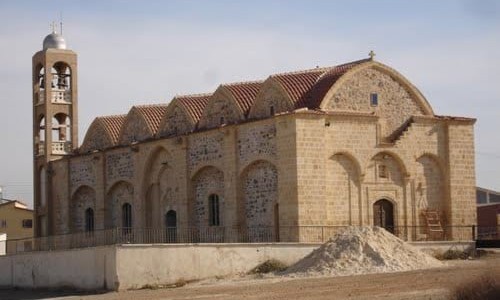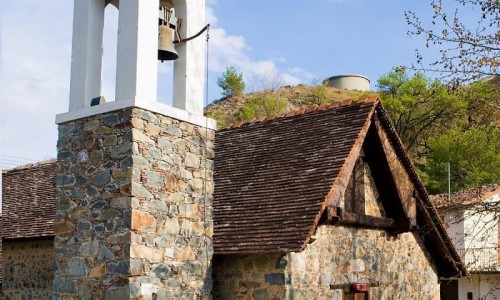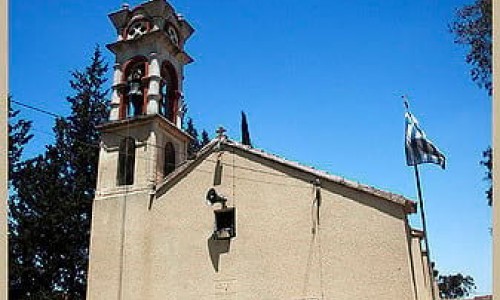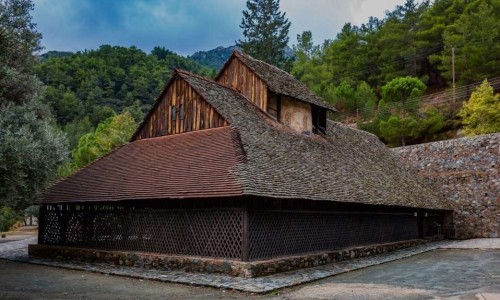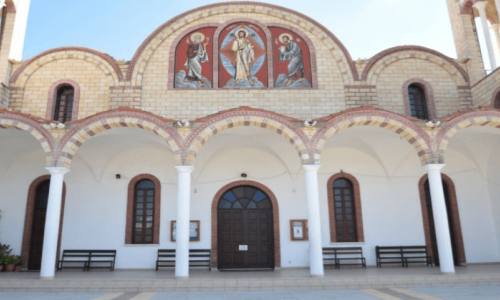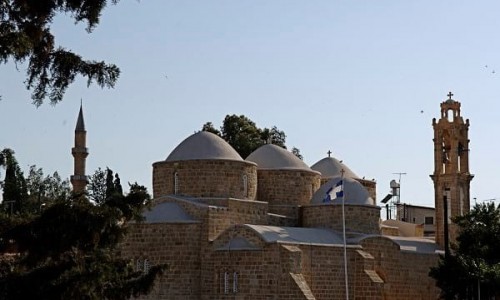Panagia Galoktisti Chapel (Pyrgos)
Nestled atop a hill between the tranquil villages of Kato Pyrgos and Pano Pyrgos in the Tylliria region of Cyprus, the chapel of Panagia Galoktisti stands as a testament to the island's rich Byzantine heritage and enduring faith. Dating back to the 12th–14th centuries, this modest yet profound structure continues to captivate visitors with its unique history, architectural charm, and spiritual significance.
Architectural Heritage
Panagia Galoktisti is renowned for its distinctive Byzantine architecture. The chapel features a single-room vaulted structure, characteristic of Middle Byzantine-era monuments in Cyprus. A square narthex was later added to the west, showcasing a furnace dome—a typical feature of the period. Constructed using local volcanic stones, sandstones, and cobbles from nearby rivers, the chapel's walls are bound together with lime plaster. Originally, the exterior was adorned with red-printed geometric decorations, though much of this has faded over time. Inside, visitors can observe hagiographies dating back to the 12th and 14th centuries, offering a glimpse into the artistic traditions of medieval Cyprus.
The Legend of the Chapel's Construction
The name "Galoktisti," meaning "built with milk," is derived from a local legend that underscores the chapel's unique construction. According to tradition, during a difficult time when a devastating disease afflicted the sheep of a nearby village, the villagers prayed to the Virgin Mary, vowing to build a larger church if she healed their flocks. Miraculously, the sheep recovered, and the villagers began constructing the chapel. However, each morning, the previous day's work had mysteriously collapsed. Realizing that the Virgin Mary might desire a more sacred offering, the villagers replaced water with goat's milk in the mortar. Once this change was made, the construction held firm, leading to the chapel's enduring name.
Spiritual Significance and Miracles
Over the centuries, Panagia Galoktisti has become a revered site for pilgrims seeking blessings related to childbirth and breastfeeding. One poignant story tells of a mother unable to breastfeed her child who journeyed to the chapel. After praying, she miraculously began to produce milk, a miracle attributed to the Virgin Mary's grace.
The chapel also holds a sacred icon of the Virgin Mary, which, for security reasons, is now housed in the nearby Church of Saints Constantine and Helen. According to local lore, during a period of unrest, the icon was mysteriously found filled with water and surrounded by wildflowers, with candles still burning nearby. This miraculous event further cemented the chapel's reputation as a site of divine intervention.
Visiting Panagia Galoktisti
The chapel remains open year-round, welcoming visitors and pilgrims alike. Situated on a hill between the two villages, it offers panoramic views of the surrounding countryside, making the journey both spiritually and visually enriching. Visitors are encouraged to dress modestly and respectfully, as it is a sacred site. Photography is generally allowed, but it’s best to avoid using flash to protect the ancient frescoes.
For those interested in exploring further, the nearby villages of Kato and Pano Pyrgos offer a glimpse into traditional Cypriot life, with local markets, cafés, and scenic views. The area is especially beautiful in spring and autumn when the valleys are lush and green.
A Living Testament to Faith
Panagia Galoktisti is more than just a historical landmark; it is a living testament to the faith, resilience, and devotion of the Cypriot people. Its unique construction, rich history, and enduring spiritual significance make it a must-visit destination for those seeking to connect with the island's deep-rooted heritage. Whether you come to pray, admire the artwork, or simply soak in the serene atmosphere, Panagia Galoktisti offers a profound experience that resonates with all who visit.


